Full Guide To Celestite vs. Angelite (This Is The Difference)

Celestite and angelite are two stones that are often confused, to the point that they are sometimes sold under the wrong name. Below you’ll find the exact differences between the two, so you can discern which stone you have, or would like to work with.
Though celestite and angelite look incredibly similar, they are different stones. These differences can be found it is the chemical makeup as well as its color and inclusions. The stones also have some metaphysical differences.
Continue reading if you want to know more about the (meta)physical differences.
Also Read: Celestite vs. Blue Calcite – What’s The Difference?
Want more help or information? If you have any more questions after reading this blog post or want a personal answer for your specific situation, join the free Facebook group! We promise you’ll get an answer from either our team members or a community member.
Chemical Composition
Celestite is a strontium sulfate from the barite family. Celestite stones can be mistaken for blue barite as they share the same chemical makeup.
On the other hand, Angelite is a calcium sulfate anhydrite that forms from gypsum or celestite and is formed as a result of compression. Their chemical make-up is almost identical to gypsum, except gypsum includes an additional water element. When gypsum comes in contact with water, angelites are formed after the water in the gypsum stone has evaporated.
Location
Most celestite comes from Madagascar, but they can be found worldwide. The most well-known deposit is in Lake Erie, Ohio, in the crystal cave. Angelites are found in Peru, Egypt, and Mexico.
Color
Celestite may have a pale or vibrant blue color and is at times colorless. Celestite may also have prominent green, brown or red tints.
Angelite is a lilac-blue stone with white streaks and a white center. The angelite stones also have brown-colored inclusions caused by iron or hematite inclusions. This is one of the distinctive features to distinguish between the two.


Pattern and Clarity
Celestite has a glassy luster. The stones can vary from translucent to transparent in terms of clarity and can have visible white banding formations within the stone.
Angelites also have a vitreous luster but are only ever translucent.
Hardness
Both are soft stones scoring 3- 3.5 on the Mohs scale. When exposed to salt, water, or high temperatures, soft stones are easily destroyed and fractured. The fragility of these stones means that they are unstable stones for use in jewelry. These stones can, however, do great in carvings in decorative objects.
Care
Celestite reacts when it comes in contact with liquids and may even cause allergies. Celestite dust is also flammable and can be lethal when inhaled. Dust accumulated within the stone is wiped with a microfiber cloth or brushed off with a soft brush.
It’s not advisable to use water to cleanse soft stones because they absorb moisture quickly. Angelite exposed to water will turn back to gypsum and become incredibly brittle. Unfortunately, this process is irreversible. Additionally, harsh chemicals will damage the surface and luster of the stone. Therefore, the best way to clean your angelite is by using a soft dry cloth to wipe off the dust.
To energetically cleanse, your smaller celestite and angelite pieces can be cleaned by letting them sit on selenite slabs for 24 hrs. You could also use sound or smoke cleansing to cleanse your stones.
After the stone is energetically cleansed, it is time to recharge it. This will fill it back up with positive energies.
Celestite is best recharged with natural light. Sunlight fills the celestite stone with affirming energies, while moonlight gives the stone intuitive energies. Too much sunlight will fade out the celestite stone, so be careful not to leave your stone in the sun for longer than an hour or so. Celestite can also be buried in the ground for at least 48 hours to restore its metaphysical powers. Be careful that it doesn’t rain, so your stone does not get wet.
Angelites are recharged by letting them sit under a full moon overnight or by placing them among powerful crystal clusters like hematite or clear quartz. Angelite can also go into sunlight, but again, only for a little bit. Ensure your angelite does not get wet by placing it somewhere where it’s protected.


Celestite vs. Angelite – Properties
Before you continue reading, beware that crystals are never a replacement for proper medical care. If you are experiencing any issues, visit a doctor.
Celestite can be used as a sleep-enhancing stone for people who suffer from unhealthy sleeping patterns. The stone can balance melatonin and thyroid hormones that affect your sleep patterns. Place a piece of celestite under your pillow for its powers to work all night.
Celestite also helps with brain fog and enhances memory and mental clarity.
An angelite’s chemical makeup includes calcium, which is vital for the skeletal structure. Angelites are powerful in healing joint and bone-related issues. Angelites can also be used to treat heart, throat, and thymus-related complications.
Celestite and angelite aren’t just similar in chemical make-up and looks; they also share common metaphysical abilities. The two are believed to be a direct link to divine and angelic communication. Using these stones helps you to communicate with your guardian angels or Spirit; think of these stones as your reliable spiritual guide.
Both stones also strengthen and protect the aura. Wearing an amulet made of either of these stones will protect your spirit from attacks and give you strength during hard times and transitions.
These blue stones are a staple in your meditation corner to uplift your spirit and connect you to the divine. They will help improve focus and visualization while in meditation.
Both stones aid vivid dreams when placed on your bedside or under your pillow when you sleep.
Chakra Association
Both celestite and angelite are closely related to the throat chakra based on color. The throat chakra allows effective communication and self-expression. This chakra communicates the voice of all the other energy points.
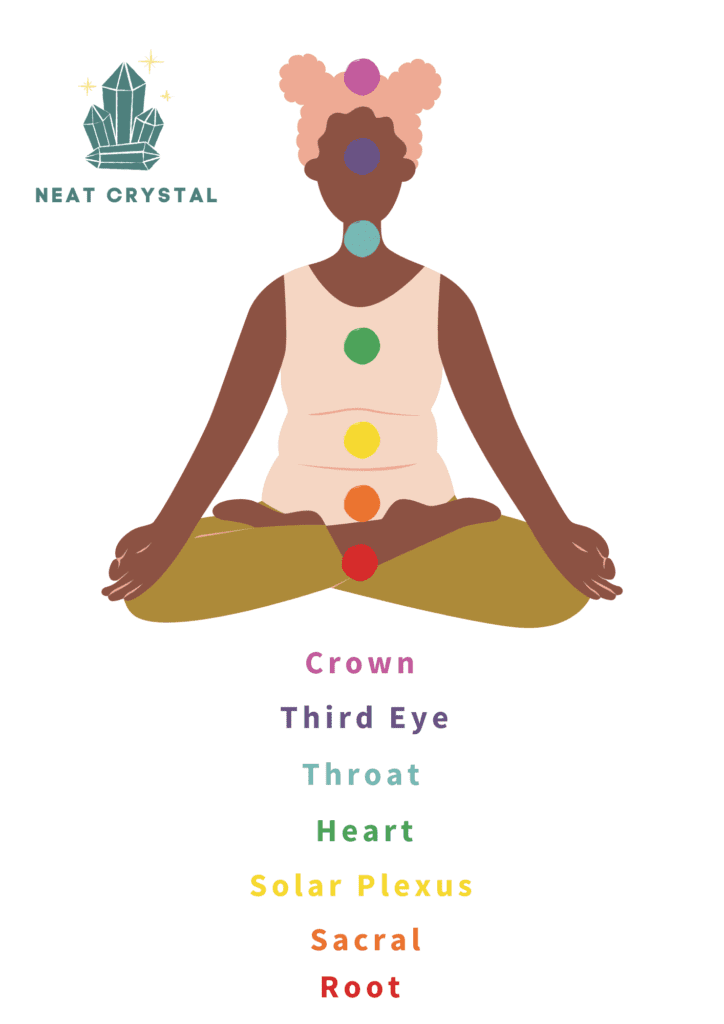
Celestite and angelite are also connected to the crown and third eye chakras. A balanced third eye chakra will encourage open-mindedness and active intuition. The crown chakra connects to the divine. A balanced crown chakra enables understanding the core of our spirituality and unlocking psychic abilities.
Planetary Ruler
Every crystal has a planet lord that governs it. This basically means that a planet has more power over a stone than the other planets. For angelite, the rulers are the moon and Uranus. The moon represents our feminine side and intuition, and Uranus is the planet of liberation and freedom.
Celestite is also influenced by two planets, Venus and Neptune. Venus is the planet for romance and creativity, while Neptune governs spirituality, harmony, and logic.
Zodiac and Birthstones
Neither celestite nor angelite are birthstones. This, however, does not mean they are not connected to any zodiac signs. As mentioned, each stone has rulers, which also correspond to zodiac signs.
For Angelite, its rulers are the Moon and Uranus. The moon rules Cancer, whereas Uranus rules Aquarius (alongside Saturn). Celestite is ruled by Venus, which is the lord of Taurus and Libra, and Neptune, the ruler of Pisces.





Working with stones that correspond with your zodiac sign helps you work through the sign’s challenges. For example, Pisces are known to be sincere and honest but can fall into the trap of pessimism. Celestite can help them to see a more optimistic viewpoint.
Elements
Celestite and angelite are both linked to the air element. The air is also known as the wind element and represents the mind’s power, intellect, and discernment. The air element rules zodiac signs Aquarius, Libra, and Gemini.
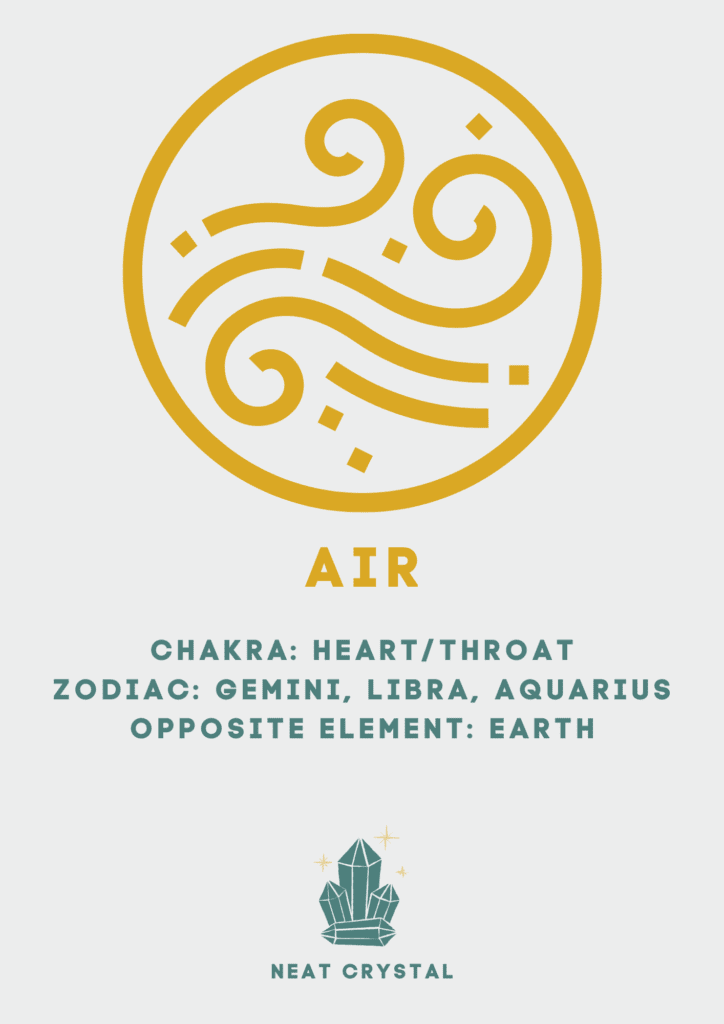
Numerical Vibration
It is beneficial if a stone’s vibrational frequency matches your needs. Celestite vibrates at two frequencies, two and eight. People who resonate with number two are social and sensitive towards others. On the flip side, these people under destiny number two can be irresponsible in action and very pessimistic.
Celestite also vibrates at a high vibrational frequency of eight. Number eight signifies leadership and strong personalities. People of this vibration are leaders in their circles but may also feel a little superior at times.
On the other hand, Angelites vibrate at one, the number that corresponds to new beginnings. People of this number value their freedom and independence.
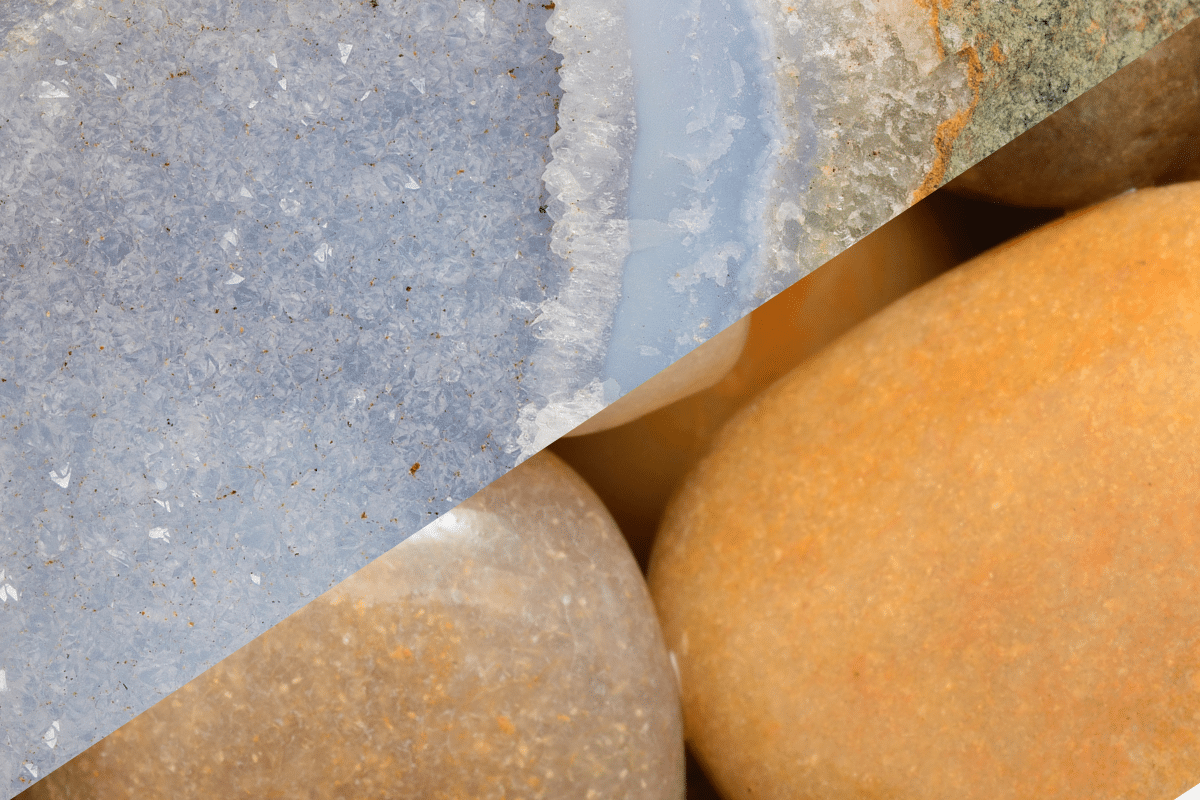

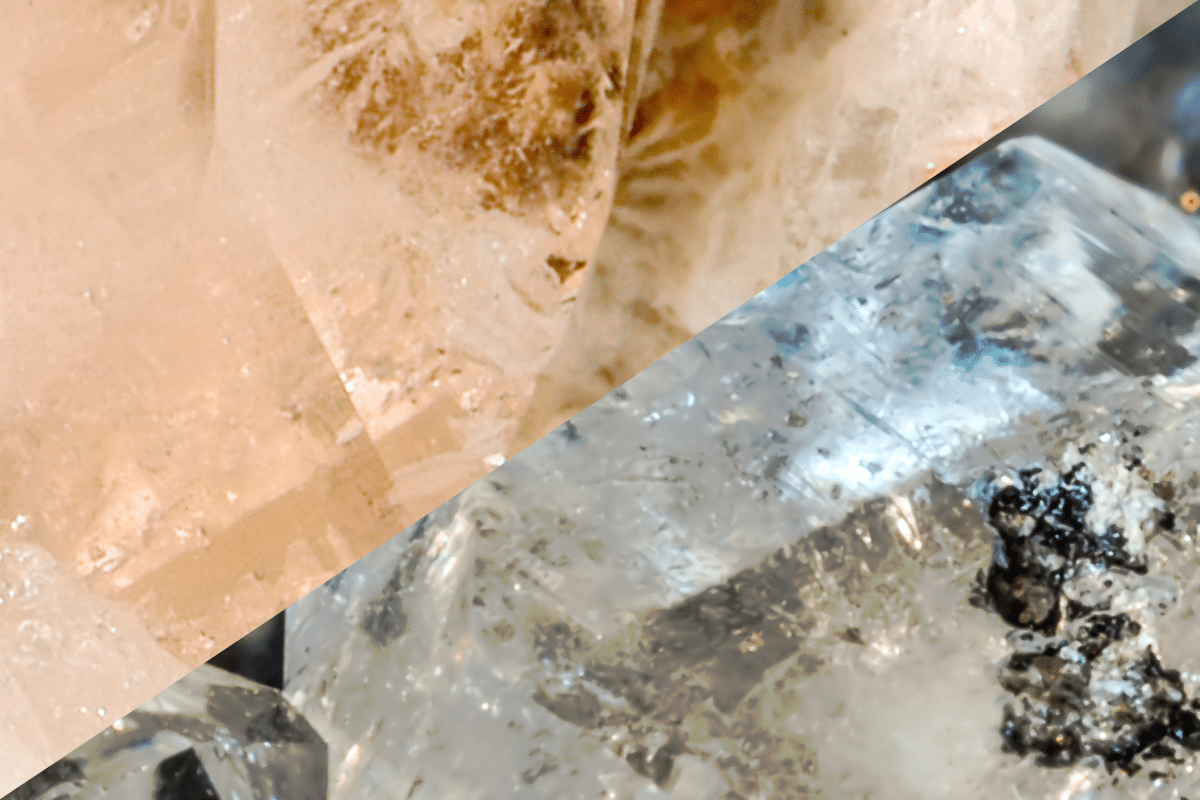

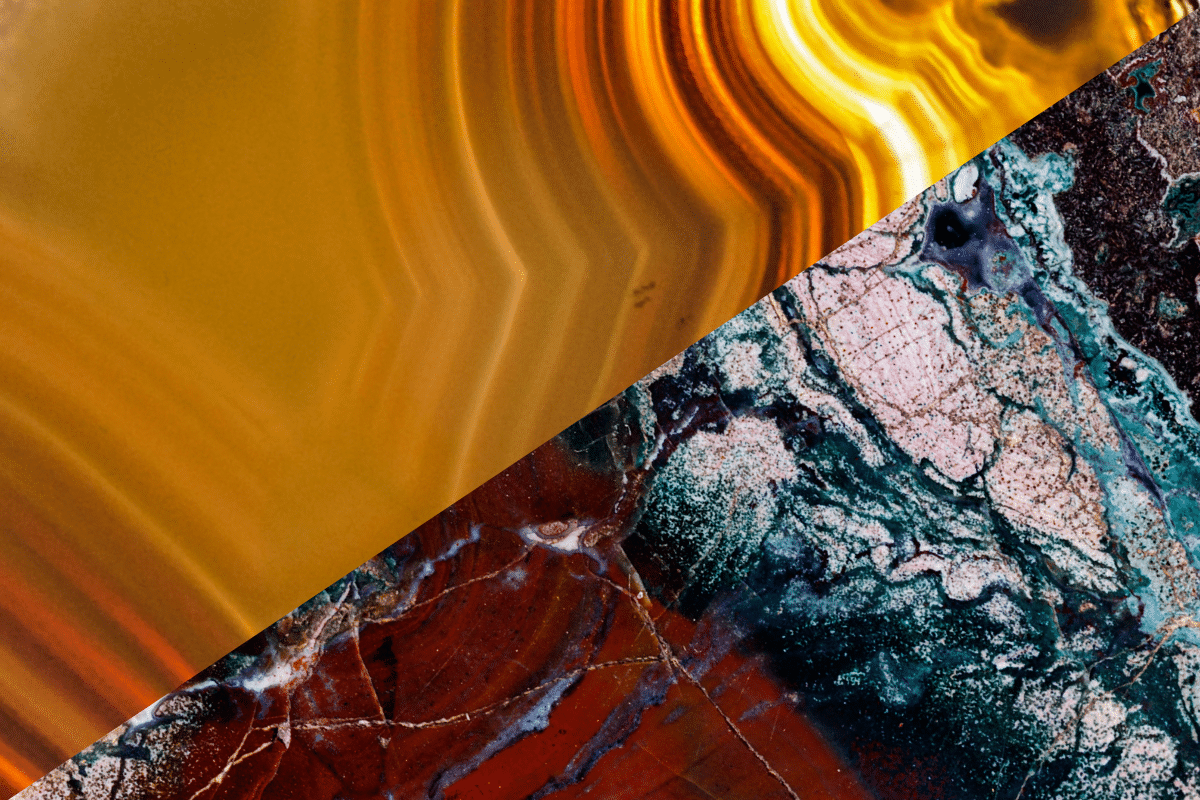
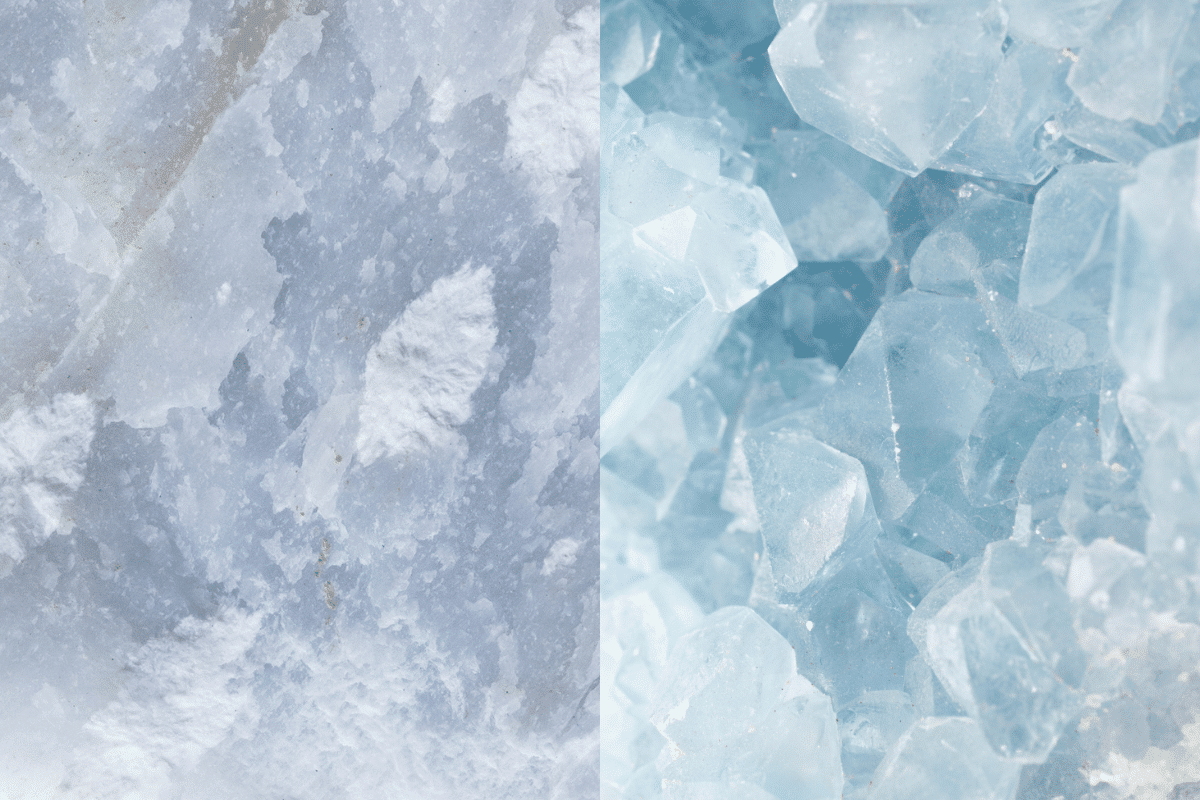
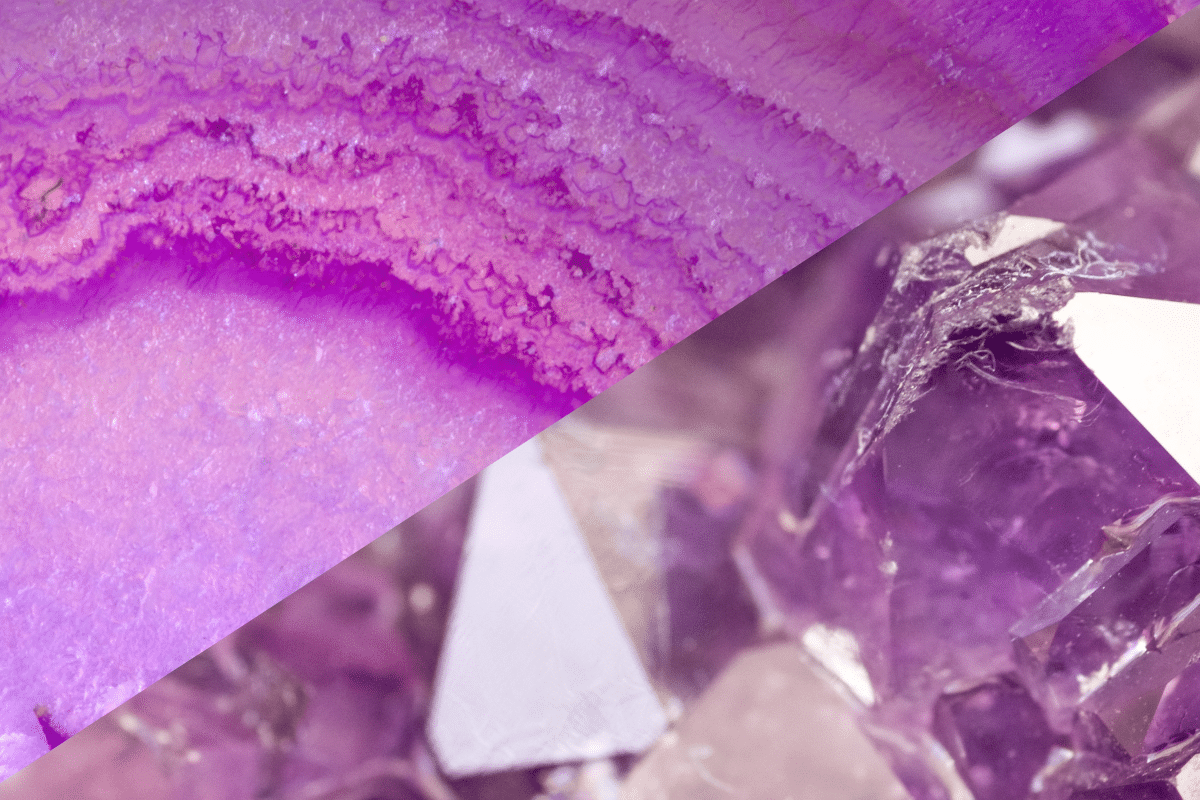
11 Comments